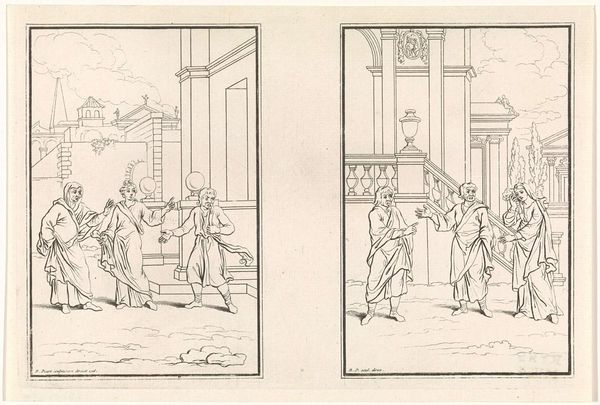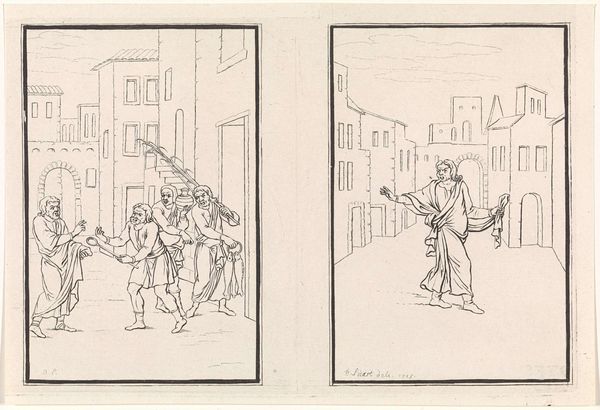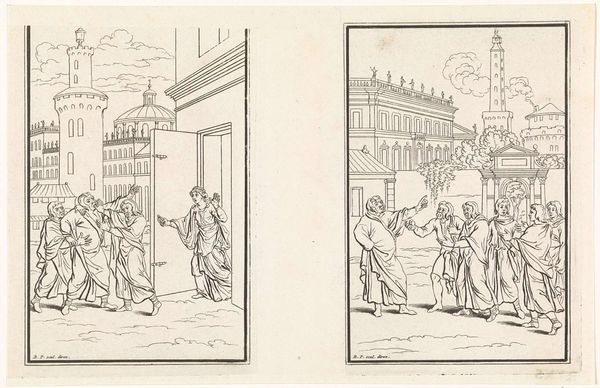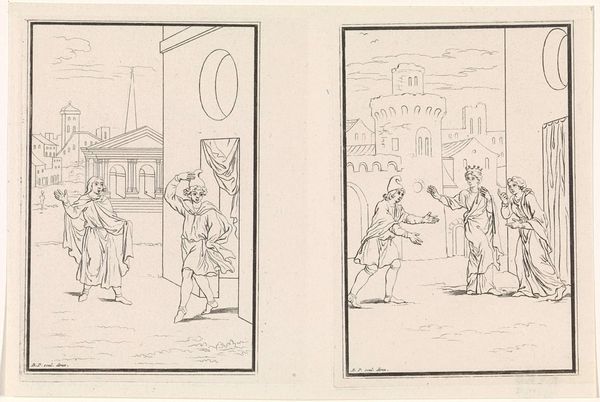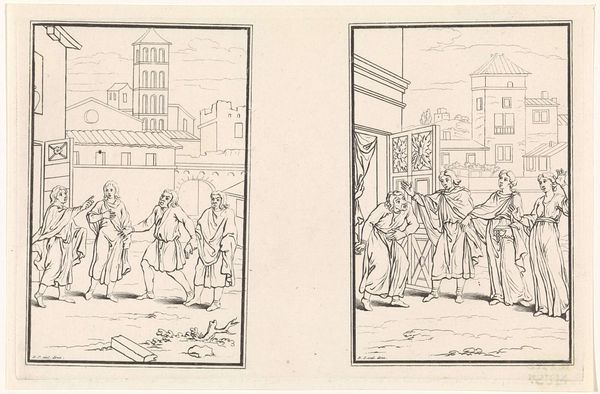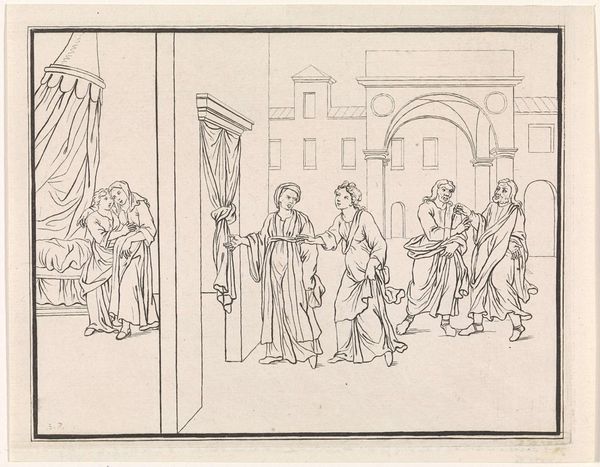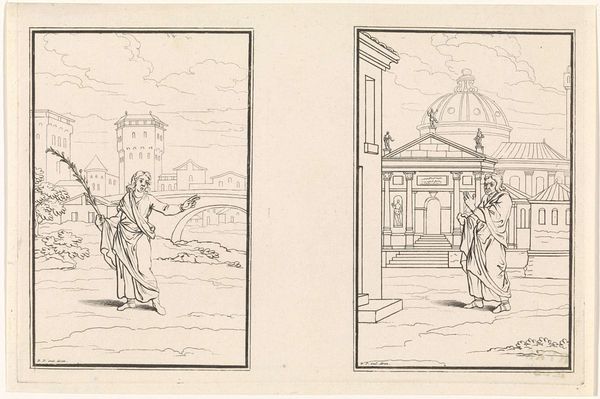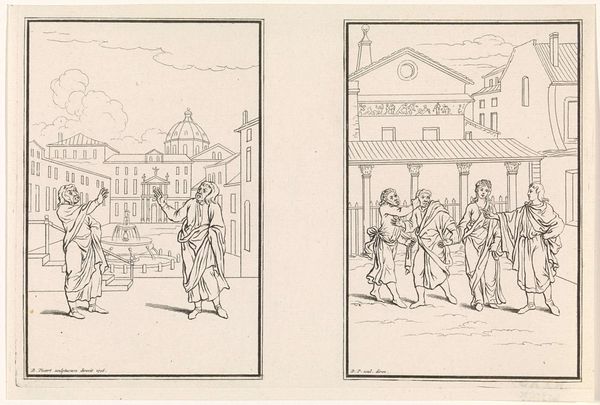
drawing, ink, pen
#
drawing
#
comic strip sketch
#
narrative-art
#
baroque
#
mechanical pen drawing
#
figuration
#
personal sketchbook
#
ink
#
sketchwork
#
ink drawing experimentation
#
pen-ink sketch
#
pen work
#
sketchbook drawing
#
pen
#
genre-painting
#
history-painting
#
storyboard and sketchbook work
#
sketchbook art
Dimensions: height 132 mm, width 194 mm
Copyright: Rijks Museum: Open Domain
Curator: This is "Two Scenes from the Comedy Adelphoe by Terentius," a pen and ink drawing by Bernard Picart, dating from between 1716 and 1718. It's currently held in the Rijksmuseum collection. Editor: It strikes me immediately as stark, almost skeletal in its depiction. The linear precision with just pen and ink emphasizes gesture. Curator: Yes, consider the socio-economic context. Picart, as a printmaker and draughtsman, produced illustrations for a burgeoning book market. The economy of line allowed for efficient reproduction and broad consumption of these classical scenes. Editor: Formally, it's fascinating how Picart divides the composition into these two distinct panels, creating a sort of before-and-after sequence, relying on architectural framing. Curator: Precisely. The architectural elements—doorways, cityscapes—aren't merely backgrounds, but devices signifying access, division, and perhaps social barriers. Think about Terentius’ play exploring the complexities of father-son relationships and contrasting styles of upbringing, which no doubt Picart wanted to translate to visuality. Editor: I am intrigued how Picart strips down the dramatic interaction between characters through simplified forms, inviting deeper exploration of emotion in absence rather than with detail. Curator: Indeed. The work, while depicting a scene from classical literature, simultaneously reveals the changing landscape of artistic production and dissemination in the early 18th century. Picart navigated between "high" art and the demands of a market keen for affordable reproductions. Editor: Ultimately, the stark visual grammar is its most captivating feature for me. The medium, ink and pen, underscores that fact—reduction allows an entry point for a more open interpretation of meaning behind human interaction. Curator: And viewing this sketch then, within the context of artistic labor, material constraints, and the demands of his patron market, enhances how Picart was pushing boundaries to engage audiences, providing valuable historical insights to that market's workings and culture.
Comments
No comments
Be the first to comment and join the conversation on the ultimate creative platform.
